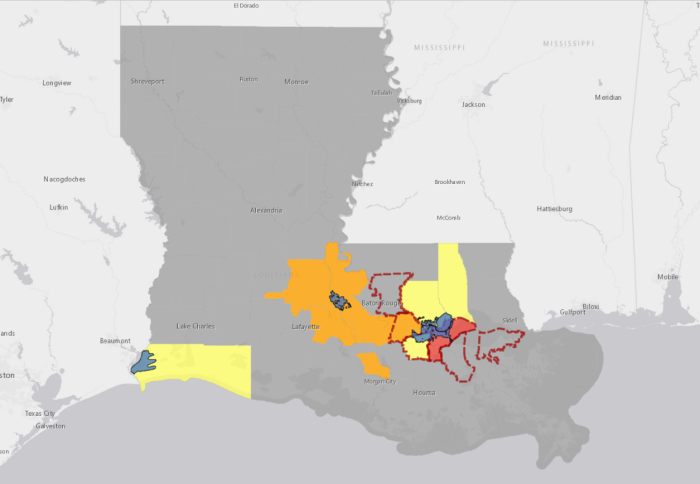Quick links and resources |
|
March 10, 2022 webinar recording. Like and share the brief. |
December 2021
Summary
Carbon capture use and storage (“carbon capture”), heavily promoted by the coal, oil, and gas industries, is now at the center of the national climate policy debate. Today when industries burn fossil fuels, the resulting carbon dioxide and methane soars into the atmosphere, traps heat, and contributes to climate breakdown. Using carbon capture technology, industries claim they will recover post-combustion carbon dioxide from their flues and smokestacks and either “store” the gas permanently underground in sedimentary rock or “use” the gas to recover oil or make other products. Proponents claim it’s a win-win — benefiting both the planet and the fossil fuel industry.
But, on closer inspection, the large-scale roll-out of such technologies is a false promise. Neither the technology to capture most, much less all, carbon dioxide emissions from polluting facilities, nor the ability to safely contain gas permanently underground, has been proven, and the United States does not have the regulatory structure to monitor either. And using carbon dioxide to produce other goods will not keep the gas permanently out of circulation since all things eventually deteriorate. (Of course, using the gas to produce more combustible oil would only further fuel the climate crisis.) On top of this, wide-scale industrial expansion of carbon technology promises to harm historically marginalized communities that already bear disproportionate environmental burdens.
In the United States, the oil and gas industry has targeted Louisiana as an emerging hub for carbon capture, mainly because of the large concentration of industrial facilities that emit carbon dioxide in the stretch of land between New Orleans and Baton Rouge. Louisiana Governor John Bel Edwards and state regulators openly support carbon capture as a way to meet the state’s goal of reducing greenhouse gas emissions to net-zero by 2050. While Louisiana must move quickly and aggressively in pursuit of climate change solutions, such expansive deployment of carbon capture would only do more harm.

Yellow (Air Products CCS): Livingston, St. James, Cameron, and Tangipahoa Parishes
Orange (Capio Sequestration CCS): Ascension, Iberville, Pointe Coupee, St. Martin, and St. Landry Parishes
Red (Both Projects): St. John the Baptist Parish
Blue: Maurepas Swamp Wildlife Management Area, Sherburne Wildlife Management Area, Lake Maurepas, and Sabine Lake
Deploying large-scale carbon capture at polluting facilities is not a climate solution; indeed, it would further entrench fossil fuel production and thus put the Paris Agreement’s goal of limiting global temperature to 1.5 degrees Celsius above preindustrial levels out of reach. In this way, such investment has the potential to expand fossil fuel industries in Louisiana under the claim that carbon dioxide emissions would be stored permanently underground. Even worse, companies would likely use much of the captured carbon dioxide to extract more oil, accelerating climate change and widening existing social inequities.
Carbon capture is not the right choice for Louisiana because the technology would not slow global warming in ways needed to keep the rise in mean global temperature to 1.5 degrees Celsius — the goal of the United Nations Paris Agreement recently reaffirmed by the Glasgow Climate Pact. Deploying carbon capture in Louisiana would also lead to climate injustice by foisting the risks and burdens of this technology on the state’s historically marginalized communities. Instead, the right choice for Louisiana involves a rapid shift toward energy efficiency and carbon-free energy sources in both industrial and non-industrial sectors of the economy.
Recommendations
- The Louisiana State Legislature should pass a statewide moratorium on the siting of any new carbon capture and storage projects in or near any community overburdened by polluting facilities or in or near environmentally fragile areas such as coastal wetlands.
- Industrial carbon capture projects at polluting facilities should be ineligible for any state (and federal) subsidies. Subsidies for new technologies should instead be directed toward electrifying high-heat industrial processes, expanding carbon-free chemical manufacturing processes, designing offshore wind technologies for use in the Gulf of Mexico and utilizing the abundance of solar and geothermal energy sources the state boasts.
- Philanthropic leaders and organizations should make sufficient resources available to support environmental justice communities and advocacy groups in Louisiana’s Cancer Alley so they can use the array of legal tools available to oppose carbon capture and hold Louisiana, the EPA, and private developers accountable for any proposed construction of carbon capture and storage operations.
- State governors and policymakers, including in Louisiana, should allocate resources and create incentives to support the necessary transition away from fossil fuels and production to carbon-free, clean, and renewable energy sources.
- Significant investments must be made in Cancer Alley and Louisiana’s coastal communities to enhance the quality of life, mitigate the decades of harm done to communities by toxic industries, and support a community-driven recovery that prioritizes the voices of those most impacted.

